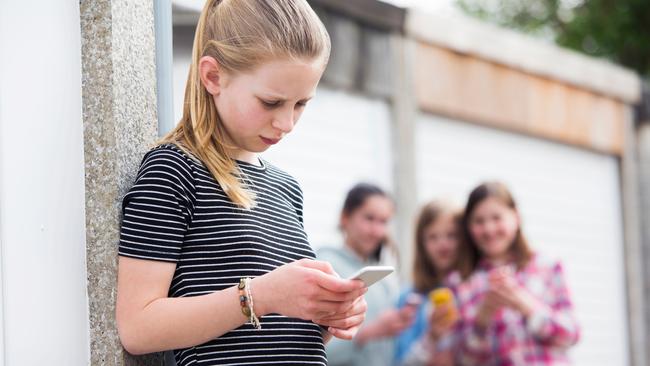How to keep cyber bullies at bay
By age 12, 51 per of kids have a social media profile but efforts to make social media safe for them have a long way to go.

Facebook’s photo-sharing service Instagram announced new measures this week to curb online bullying on its platform, providing yet another sign that the odious side effects of connecting people across the globe is now a problem too big to ignore.
Instagram gives those preoccupied with appearances a global audience but it is also a haven for bullying. The platform allows users to win adulation through anonymous torment.
Instagram head Adam Mosseri says it can do more to prevent bullying and the two new measures, at the very least, show that social media platforms are openly recognising the problem.
Unlike Facebook, which many teens discarded some time ago, and Twitter, which is used by a far smaller group of users than you would think, Instagram is increasingly younger users’ favourite platform for documenting their lives.
Teens beat algorithms
While the technology giants can monitor every nanosecond of user behaviour on their platforms, policing it is too great a task for any algorithm.
It’s estimated that by age 12, 51 per of children have a social media profile.
The first feature introduced by Instagram supposedly uses artificial intelligence to flag comments that “may be considered offensive” to users.
In such cases, users will be prompted, “Are you sure you want to post this?” and then offered the option to “undo” their comment before it gets posted.
The other new addition is the ability to “restrict” other users from looking at your account.
“We’ve heard from young people in our community that they’re reluctant to block, unfollow or report their bully because it could escalate the situation, especially if they interact with their bully in real life,” Mosseri says.
So by using this new option, you can limit another user’s interaction with your account without making it obvious.
“We can do more to prevent bullying from happening on Instagram, and we can do more to empower the targets of bullying to stand up for themselves,” Mosseri says.
“These tools are grounded in a deep understanding of how people bully each other and how they respond to bullying on Instagram, but they’re only two steps on a longer path.”
Kids left to self-regulate
That longer path may actually require social media platforms to get their hands dirty, because the measures announced this week are designed to help young users self-regulate their behaviour, asking them to exercise a level of maturity that’s probably well beyond their years.
Maturity is not the word that immediately comes to mind when you think about social media and teenagers, or adults for that matter, so any measure that relies solely on self-regulation is almost certain to fail.
Acting eSafety Commissioner Maria Vassiliadis tells The Australian that Instagram’s new features represent a positive step, adding that social media companies need to do risk assessments upfront and bake safety features into the design, deployment and development of a product or service — before it goes to market — rather than retrofitting safety features after the damage is done.
Facebook notoriously began as a “hot or not” game for Harvard students, with the platform struggling to build in safety and privacy features, given it was never designed accommodate billions of users across the globe.
“It is important tech companies continue innovating with advanced technologies to help create safer spaces for users. This is what we call Safety By Design — our recently launched, world-first initiative that places the safety and rights of users at the forefront of online service development,” Vassiliadis says.
Parents in frontline
Parents are the frontline of defence when it comes to keeping their children safe online, which first and foremost means engaging with them early and often about their online activities, she adds.
“Our research shows 81 per cent of parents have given their child access to the internet before the age of four, so key values of respect, responsibility, reasoning and resilience need to be reinforced early and often in the home. Our research also shows that parents most commonly turn to schools for online safety information,” Vassiliadis says.
“Ultimately, we all have a responsibility to help children have safer and more positive experiences online — parents, carers, teachers and anyone involved in their lives.”
A unilateral push by Facebook or any other technology giant to crack down on how its users behave on their platforms risks alienating them altogether, pushing them into darker corners of the internet.
Tinder for teens
Facebook, Instagram and Twitter may get the headlines but under the radar are several other services that more often than not serve as breeding ground for cyber-bullying and odious behaviour.
One app, Yubo, is raising questions about how young is too young for social media. Police have warned that the app, which calls itself “an easy and free way to make new friends and chat with them”, could be exploited by adults posing as children
With Yubo — which used to be called Yellow but probably changed its name to shed its reputation as “Tinder for teenagers” — users as young as 13 can match with each other by swiping right on a series of profiles that pop up on their screen. When two people match, they then swap messages and photos through Snapchat, a separate platform.
The app says it has more than 20 million users, but it has come under heavy fire given anyone can create a fake profile. One app review says “most people abuse the live sessions to harass and bully others scot-free”, and that the app’s culture is “toxic”.
Another smartphone app, Sarahah, was temporarily removed from Google and Apple’s app stores last year following accusations it facilitated teen bullying.
It allowed teenagers to write anonymous messages to other users, with the app’s description reading “Sarahah enables people to receive honest and constructive feedback from family, friends, and colleagues”.
One video-based app, TikTok, has fast eclipsed the likes of Facebook and Snapchat as the teen mobile app of choice. It lets users share 15-second videos with friends, family or the world, with users doing anything from lip-synching to performing sketches and pranks.
It has about 500 million users worldwide, most of whom are teenagers, and has faced criticism over the fact that all accounts are public by default. Children are also tempted to take risks to rack up “likes” or “follows” in the app.
Regulators left behind
Government regulators are slowly beginning to take action and step in when app makers themselves fail to do so.
In February, the US Federal Trade Commission fined TikTok $US5.7 million ($8.2m) for collecting the personal data of children under 13 without parental consent, while the app was banned in India over concerns it was being used to share sexually explicit content.
Closer to home, youth advocacy group ReachOut wants Australian regulators to introduce a star system, rating platforms including Instagram, Snapchat and YouTube for how safe they are for children and how they handle cyber-bullying.
Last month the Victorian government announced a statewide ban on mobile phones during school hours for public schools as part of its bid to stamp out toxic online behaviour, drawing strong positive and negative reactions.
Under the ban, students will have to switch off their phones and keep them in their lockers until the final bell rings, with parents or guardians forced to call the school in case of an emergency.
“Half of all young people have experienced cyber-bullying,” according to state Education Minister James Merlino.
“By banning mobiles we can stop it at the school gate.”
However, regulatory intervention has its limits.
The biggest problem with social media platforms is that they were built to be unregulated spaces, where some users can hide behind anonymity to hound their victims.
School bans
Banning mobile devices from schoolyards, enforcing age limits on platforms and giving users the ability to moderate their behaviour may seem like viable solutions but there’s no silver bullet here.
The ubiquitous nature of social media has allowed the traditional travails of growing up to morph into a dangerous beast.
Tackling it is going to require parents, legislators and the technology companies to step up and set the parameters of acceptable behaviour on any platform.
That’s easier said than done because so many of the drivers of bullying, cyber or otherwise, are part of our broader milieu.
We castigate young social media users for inappropriate behaviour, yet our television screens are replete with programming that often revels in bullying behaviour by participants.
A fixation on physical appearance and gaudy displays of wealth are all par for the course in reality TV land, so it’s little wonder that social media is reflecting the less than ideal corners of our traditional media menu.
Platforms such as Instagram offer an unprecedented level of interconnectedness for young users, offering them a space where they not only can interact but also can express themselves.
Erasing these spaces from the internet doesn’t necessarily spell an end to atrocious behaviour and for now the challenge of how we define an appropriate online interaction remains unaddressed.
-
Teenage social butterflies spoilt for choice with apps

As the app ecosystem continues to thrive, teens are faced with more options than ever when it comes to online places to chat, share and ultimately live their digital lives.
Once undisputedly the king of social media among teens, Facebook is now 15 years old and decidedly uncool with users that age. Surveys show Facebook use among teens has dropped from about 95 per cent a few years ago to around 30 per cent today, with teens aware their parents and other adults frequent the platform.
Facebook’s decision to purchase Instagram in 2012 has proved to be a masterstroke for the company’s bid to hold on to teenage users. The photo-sharing app still dominates download charts, and last year reported having one billion monthly active users. That’s less than half Facebook’s number of 2.3 billion but, crucially, teens love Instagram and continue to flock to the app despite warnings from experts that it’s the worst social media network for mental health and cyber bullying.
Snapchat
A multimedia messaging app with disappearing messages, Snapchat continues to be popular with teenagers who use it to share pictures and videos — called Snaps — which are deleted after they’re viewed. One driver behind Snapchat’s popularity is its filters, which alter the user’s appearance, a feature Instagram has since copied. Teens also build up “streaks” with their friends, with every day a friend snaps another friend increasing the streak, throwing a competitive element to the otherwise fun social network.
TikTok
One of the most recent social media hits, TikTok describes itself as the destination for short-form mobile videos, and racked up 500 million active users as of late last year. The app is owned by China’s ByteDance, and promises a video community that is “raw, real and without boundaries”, causing some parents to worry that its surging popularity among young girls is leading to potential abuse.
Fortnite
The online shooting game has become a worldwide gaming sensation, allowing up to 100 people anywhere in the world to play in the same round. It has nearly 250 million players, many of whom are school-age children and use the game as a place to hang out and chat with friends. In February the game hosted an in-game concert with DJ Marshmello, which reportedly drew in 10.7 million concurrent viewers through streaming and 7.6 million concurrent players in the game. Fortnite’s creator, Epic Games, acquired teen social media app Houseparty — which has about 35 million users — last month, in a sign that gaming and social media will continue to converge.

To join the conversation, please log in. Don't have an account? Register
Join the conversation, you are commenting as Logout